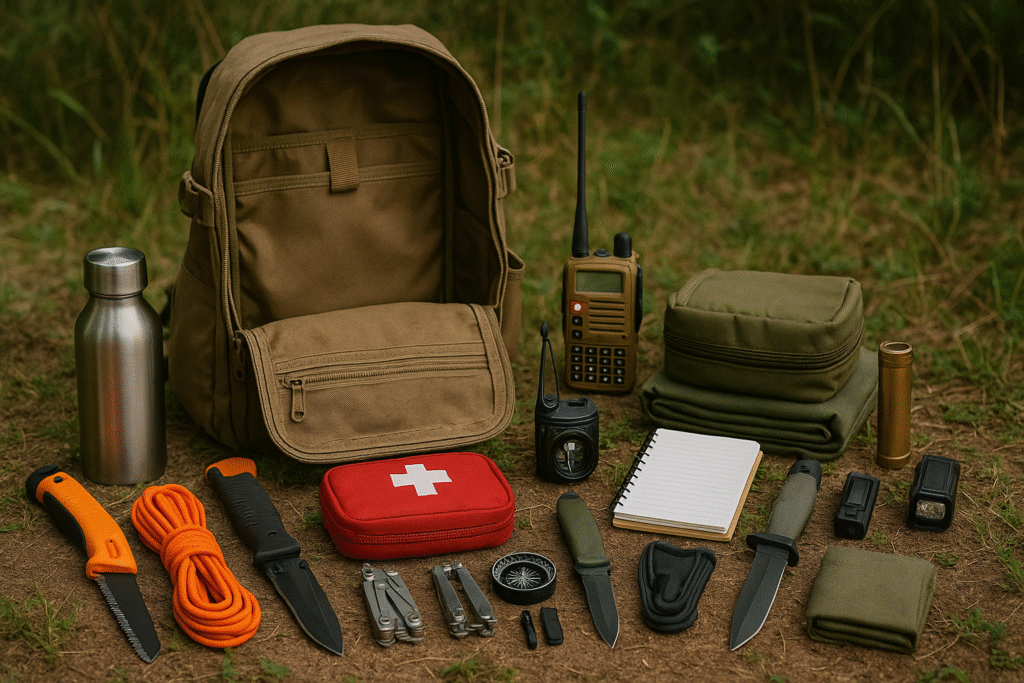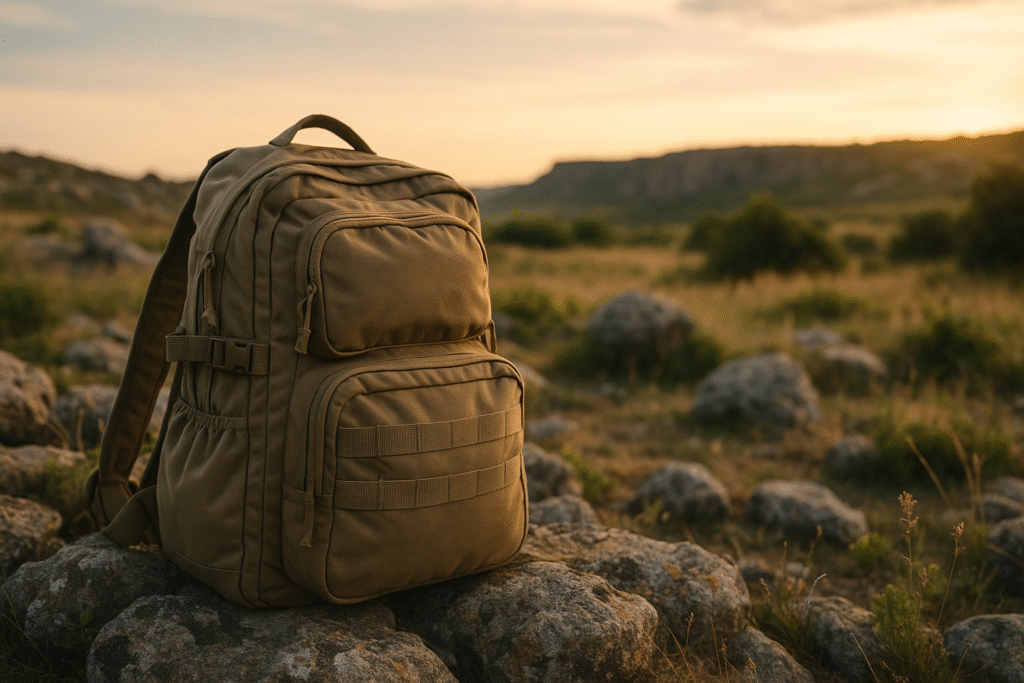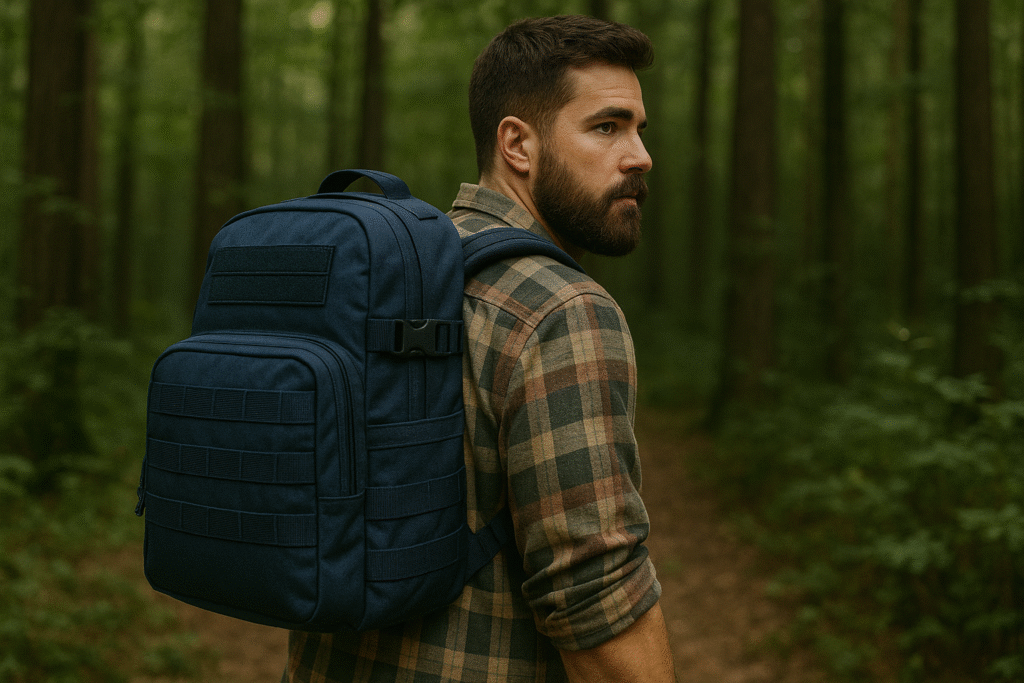In an increasingly unpredictable world, being prepared for emergencies is no longer just a lifestyle choice—it’s a necessity. Whether you’re dealing with natural disasters, civil unrest, or other unforeseen crises, having a reliable bug out bag (BOB) can make the difference between chaos and survival. This comprehensive guide will walk you through everything you need to know to build the best bug out bag for you and your family.
What Is a Bug Out Bag?
A bug out bag is a pre-packed emergency kit designed to sustain you for at least 72 hours during an evacuation or emergency situation. The purpose is to grab it and go when disaster strikes, without the need to stop and gather supplies. It includes essentials such as food, water, shelter, medical supplies, and tools to keep you safe and self-sufficient.
Whether you’re preparing for a hurricane, wildfire, blackout, or even a large-scale societal breakdown, a well-stocked bug out bag can give you peace of mind and a tangible survival advantage.
Why You Need a Bug Out Bag
Emergencies can escalate rapidly, leaving little to no time to prepare. If authorities issue a mandatory evacuation, or if your environment becomes hostile, you’ll need to move quickly. A well-prepared bug out bag gives you that mobility and readiness. You won’t waste precious minutes scrambling for supplies—you’ll already be equipped and ready to act.
Additionally, creating a bug out bag helps you mentally and emotionally prepare for crises. It shifts your mindset from reaction to resilience, giving you a strategic advantage in moments of chaos.

Key Elements of the Best Bug Out Bag
To build the best bug out bag, you need to consider six key categories: water, food, shelter, health and hygiene, tools, and communication. Let’s break these down in detail.
1. Water and Hydration
Water is your number one survival need. A person can only survive about three days without it. Make sure your bug out bag contains:
- Durable water bottle (preferably stainless steel)
- Water purification tablets
- Portable water filter (like a LifeStraw or Sawyer Mini)
- Collapsible water container for gathering and storing additional water
2. Food and Nutrition
Aim for non-perishable, lightweight, and high-calorie foods that don’t require refrigeration or extensive preparation:
- MREs (Meals Ready to Eat)
- Dehydrated backpacking meals
- Energy bars and protein snacks
- Compact stove or portable cooking system
- Lightweight utensils and metal cup or pot
3. Shelter and Warmth
Shelter protects you from the elements and is vital for survival, especially in extreme conditions:
- Emergency bivy sack or compact tent
- Mylar emergency blankets
- Lightweight tarp and paracord
- Extra pair of socks and thermal underwear
- Compact sleeping bag or sleeping pad
4. First Aid and Hygiene
Health can deteriorate quickly in survival situations. A well-equipped first aid kit is essential:
- Bandages, antiseptics, gauze, tape
- Tweezers, scissors, and safety pins
- Pain relievers and allergy medication
- Personal hygiene products (toothbrush, toothpaste, wipes)
- Hand sanitizer and face masks

5. Tools and Gear
The right tools can greatly increase your chances of survival:
- Multi-tool or Swiss Army knife
- Tactical flashlight (with extra batteries)
- Fire-starting tools (ferro rod, waterproof matches, lighters)
- Duct tape and zip ties
- Compass and local maps
6. Communication and Documentation
Staying informed and connected can be a game-changer:
- Battery-powered or hand-crank emergency radio
- Prepaid cell phone with charger
- Notepad and waterproof pen
- Copies of important documents (ID, insurance, contacts)
Choosing the Right Bug Out Bag
The bag itself is just as important as its contents. Look for the following qualities:
- Durability: Made from rugged materials like 600D or 1000D nylon
- Capacity: Typically 40–60 liters for a 72-hour kit
- Comfort: Padded shoulder straps, sternum strap, and hip belt
- Compartments: Multiple pockets for organized storage
- Discreet appearance: Avoid tactical styles that might draw unwanted attention
Popular models include the 5.11 Rush series, Maxpedition Falcon, and other tactical hiking backpacks. Choose a bag that fits your body comfortably when fully loaded and has a hydration bladder compartment if possible.
Bug Out Bag for Families
If you’re preparing for a family, you’ll need to scale your kit accordingly. Children may need their own mini bug out bags with age-appropriate gear like snacks, comfort items, and medical supplies. Pets should also be considered—pack food, water, a leash, and vaccination records for your animals.

Atlas Survival Shelter and Bug Out Locations
While a bug out bag is your mobile solution, you should also have a destination in mind. Ideally, you’re not just running from danger, but toward safety. That’s where survival shelters come in.
One high-quality option that many preppers trust is the Atlas Survival Shelter. Known for its underground bunkers and steel survival shelters, Atlas offers a level of long-term security that a temporary bug out bag can’t match. For those with the resources, combining a bug out bag with a pre-built shelter ensures you’re prepared both in transit and at your final destination.
Bug Out Bag Maintenance
It’s not enough to build your bag and forget about it. Check and update it every 3–6 months:
- Rotate food and water supplies
- Replace expired medication
- Check batteries and electronics
- Reevaluate based on changing seasons or new family needs
Practice using your bag and know how to use every item. The middle of an emergency is not the time to learn how a fire starter works or how to pitch a tarp.
Common Mistakes to Avoid
Even experienced preppers make mistakes. Here are a few to watch out for:
- Overpacking: Keep your bag manageable—only pack what you can carry long distances
- Poor quality gear: Invest in durable, tested equipment
- Ignoring personal needs: Customize your bag with necessary prescription meds, glasses, or dietary items
- Lack of training: Tools are only as good as your ability to use them
Final Thoughts
Building the best bug out bag is about planning, customization, and adaptability. Whether you’re a seasoned survivalist or just beginning to prepare, having a reliable BOB can provide security and peace of mind in uncertain times. Include only what you truly need, test your gear regularly, and make sure your family is familiar with your emergency plans.
In a world where disaster can strike without warning, being ready is no longer optional—it’s essential. Start building your bug out bag today. Your future self may thank you.

